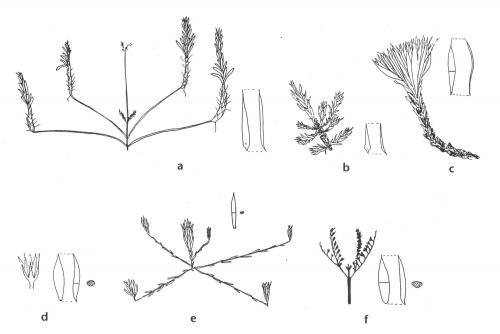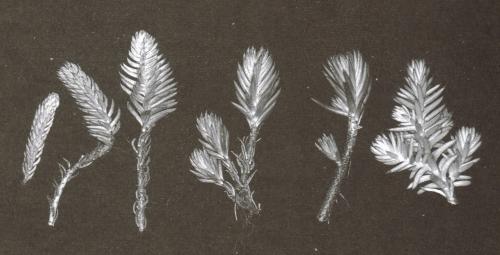Characteristics of Genus Petrosedum
Genus Petrosedum was proposed by Grulich 1984 for the species of Sedum series Rupestria Berger. This series is confined to the Euro-Mediterranean region and has always been considered a natural group (cf the thesis by Henk 't Hart 1978), clearly distinguishable from other species of genus Sedum and more closely related to genus Sempervivum than to genus Sedum - already pointed out by Uhl 1961 and more recently confirmed by Mort et al. 2001 and by Nikulin et al. 2016. Recent studies in molecular systematics suggest that Petrosedum and Sempervivum have a common ancestor.
Characteristics of Petrosedum species
Species of Petrosedum are morphologically very similar, they have terete or semiterete leaves and while one of the main characteristic features of members of genus Sedum is its 5-merous flowers, plants belonging to genus Petrosedum have 6- or more- parted flowers. Petrosedum species hybridise easily, in nature as well as in cultivation.
Ray Stephenson (Sedum, Cultivated Stonecrops, 1994, pp 116 & 121) :
To recognize species of this genus, the following features need to be studied :
Inflorescence reflexed in bud
Petrosedum amplexicaule, P. rupestre, P. reflexum
Inflorescence not reflexed (faces skywards throughout the full development)
P. montanum, [P. thartii], P. ochroleucum, P. pruinatum, P. sediforme, P. erectum
Flowers definitely yellow
P. amplexicaule, P. montanum, [P. thartii], P. pruinatum, P. rupestre
Flowers light straw color
P. ochroleucum, P. sediforme
Plant dries up in summer
P. amplexicaule, P. pruinatum, P. rupestre (sometimes)
Plant remains in growth in summer
P. ochroleucum, P. montanum, [P. thartii], P. pruinatum, P. sediforme, P. rupestre (sometimes)
Inflorescence densely glandular-pubescent (especially sepals and bracts)
P. montanum [(filaments glabrous), P. thartii (filaments usually densely papillose at the base)], P. ochroleucum
Sepals long
P. montanum, P. ochroleucum
Sepals short
P. rupestre, [P. thartii], P. sediforme
Three lobed spurs at the bases of leaves
P. amplexicaule
Petals erect
P. ochroleucum
Leaf shape and other important diagnostic characteristics of genus Petrosedum :

(a) Petrosedum amplexicaule ssp. amplexicaule has large fleshy propagules, long stolons, and distinctly spurred leaves.
(b) P. amplexicaule ssp. ibericum has tiny fleshy propagules, short stolons, and distinctly spurred leaves. [According to IHSP, ssp. ibericum is synonymized with ssp. amplexicaule]
(c) P.rupestre 'Welsh Stonecrop' has stems shaggy with dead leaves and nonfleshy leaves that cluster into flat-topped tufts in winter.
(d) leaves of P. ochroleucum, P. montanum, [P. thartii], and P. reflexum are indistinguishable (fig.2) but flowers of P. ochroleucum have upright petals.
(e) P. pruinatum has nonfleshy propagules and long stolons.
(f) P. sediforme has fleshy flat-topped leaves and distinct inflorescences.

Figure 2
Vegetatively, Petrosedum montanum (left, 3 clones), [P. thartii], P. ochroleucum (middle), and P. reflexum (right, 2 clones) are indistinguishable.